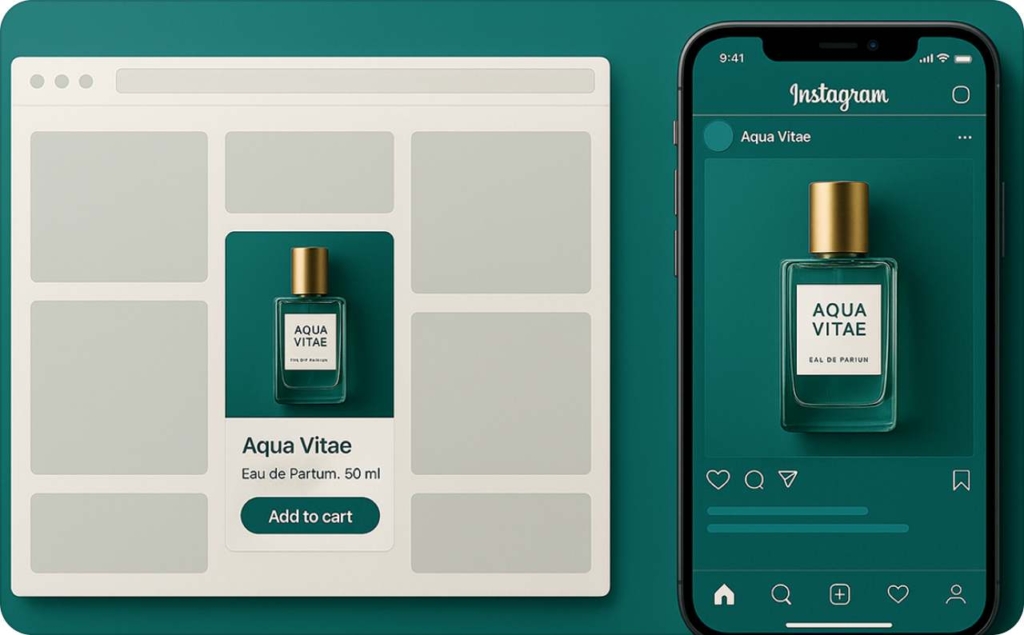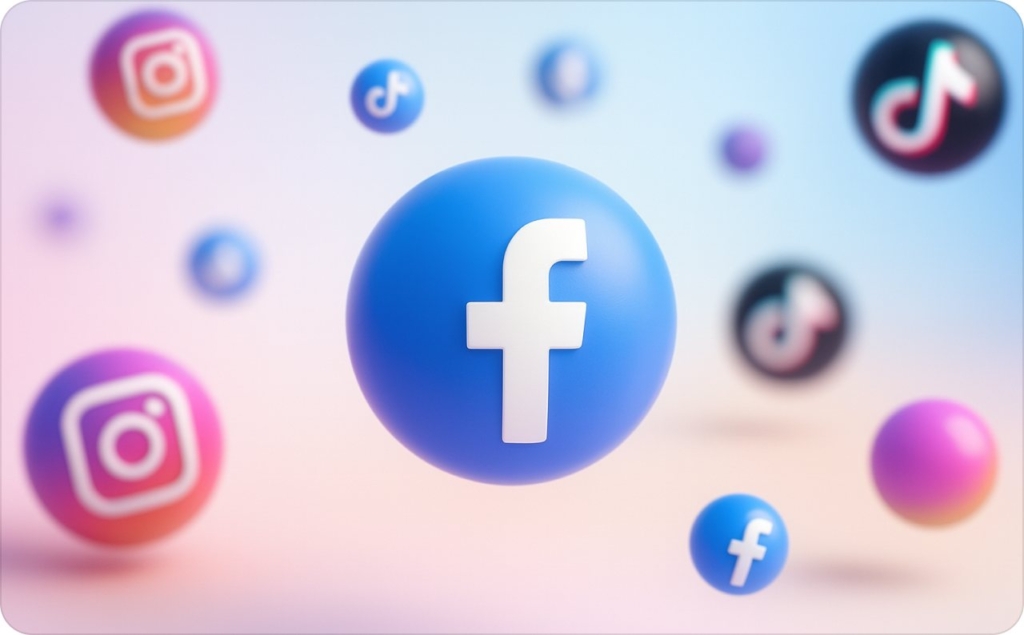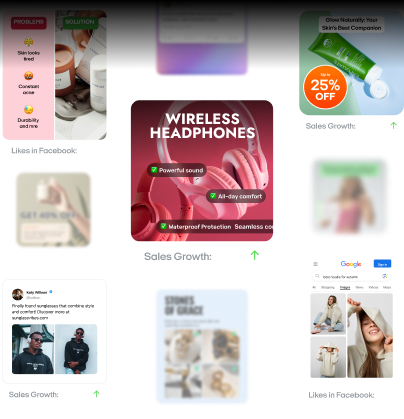12 top AI in advertising examples to learn from in 2025
Looking for real-world inspiration on how brands are using AI in advertising in 2025? Zeely AI brings deep expertise in automating ad creation, optimization, and personalization.
AI in advertising examples are real-world cases where machine learning is applied to targeting, bidding, creative testing, or measurement to drive measurable revenue growth. A true AI example is a model-driven optimization that produces lift in ROAS, CAC, or pLTV compared to a baseline.
For instance, Google highlights that modeled conversions fill gaps but do not prove incremental value, which is why you need holdouts or geo-lift studies to confirm results Google Help. Harvard Business Review stresses that marketing mix modeling remains the gold standard for proving incrementality.
In 2025, AI adoption among marketers is high, but maturity is still uneven. McKinsey finds that companies capturing the most value pair AI systems with governance and strict measurement. That means small businesses can learn from real campaigns, but they also need to apply the same discipline: define goals, measure rigorously, and not accept modeled wins at face value.
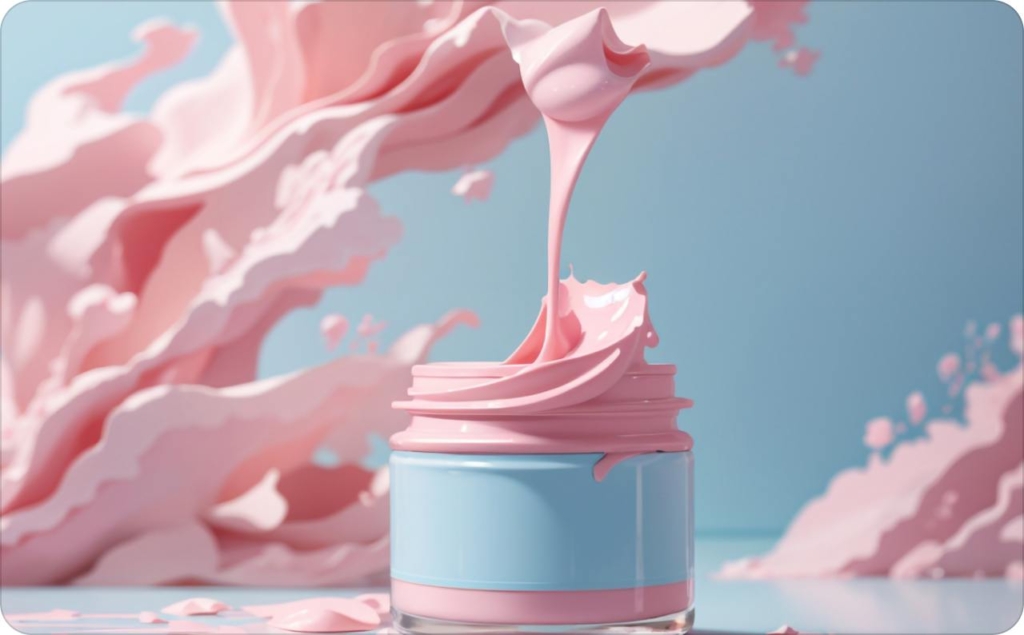
What сounts as an “AI in advertising example”
An AI in advertising example is any case where model-driven optimization leads to measurable lift. This means algorithms are not just automating rules but are actively predicting and adjusting toward higher conversion value.
You should only count an example as valid if you can prove lift compared to a baseline through holdout testing, geo-lift, or marketing mix modeling. Funnel.io notes that incrementality is the key difference between “reported” and real performance. Google reminds advertisers that modeled conversions are estimates and should not be confused with incremental outcomes.
12 top examples of AI in advertising you can use
Dynamic creative testing — automatically find winning ad versions
Instead of guessing which image or headline works best, you let the platform mix and match your ad elements in real time. It uses computer vision to judge visuals and language models to read text, then shows the versions most likely to perform. Fashion&Friends, a fashion retailer, tried this approach and saw a 62% increase in conversion rate and a 73% boost in return on ad spend.
Why it works
- It quickly tests many combinations you could never manage manually
- It adapts to different audiences by showing the most relevant variation
- It prevents creative burnout by rotating new versions before old ones go stale
- It saves you money by cutting wasted impressions
How to use it
Upload at least three images, headlines, and descriptions into your ad account. Give it a week to run without changes, then review which versions performed best. Aim for results like a 10–30% higher conversion rate or more revenue efficiency at the same spend.
Hidden pitfall
The platform may report “modeled” results that look good but don’t always equal extra revenue. Run a simple holdout test to confirm the real impact.
Smart bidding by value — chase profit, not just clicks
Predictive bidding uses machine learning to raise or lower bids depending on the user’s chance of buying. Turkish retailer Trendyol did this by setting return-on-ad-spend targets for each product category. They achieved a 180% improvement in return on ad spend and reduced customer acquisition cost by 27%.
Why it works
- It rewards higher-value purchases instead of cheap leads
- It adjusts in real time to demand and competition
- It helps stabilize cost per customer
- It frees you from manual bid management
How to use it
Set your goal in terms of value, such as “profit per purchase,” not just clicks. Import sales values from your checkout into the ad platform. Give the system 50+ purchases per week per campaign to learn. Expect a 15–40% lift in advertising profitability once the system stabilizes.
Hidden pitfall
The platform may count “modeled” conversions that are not directly measured. Always double-check with a controlled experiment.
Expanding your audience with lookalike modeling — reach new buyers who act like your best customers
Platforms like Meta and TikTok let you create “lookalike” audiences by training their AI on your existing customer list. The system then finds new people who behave like your most valuable buyers. When Meta tested this with retail and service advertisers, businesses kept customer acquisition costs steady while unlocking bigger reach.
Why it works
- It uses your top customers’ behavior to guide prospecting
- It grows reach without flooding you with low-quality leads
- It aligns ad delivery with lifetime value, not just one-off clicks
- It scales campaigns while keeping cost per customer predictable
How to use it
Upload a clean list of your best customers, tag their purchase value, and let the platform build a similar audience. Launch campaigns with 3–6 creative variations and give them 7–10 days to stabilize. Expect 5–10% higher conversion rates at the same or lower cost per acquisition..
Hidden pitfall
If your source list is too small or messy, the AI will model on noise and bring you junk traffic instead of quality prospects.
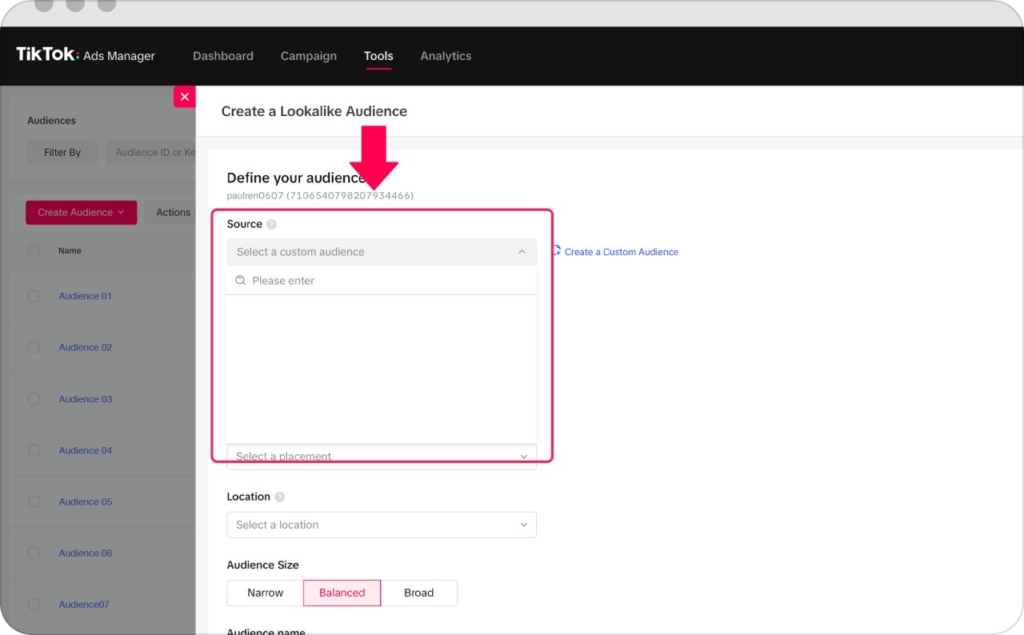
Photo source: TikTok Business Help Center
Keeping ads brand-safe with contextual classification — protect your image and avoid wasted spend
Contextual classification means scanning a page or video before your ad appears, so your brand shows only in suitable environments. The Global Alliance for Responsible Media (GARM) created standards, and companies like Integral Ad Science report that ads placed with brand-safety filters perform up to 30% better in engagement because users trust the context.
Why it works
- It avoids your ads appearing next to harmful or controversial content
- It improves brand trust and long-term customer value
- It protects ad budgets from wasted impressions in poor environments
- It boosts engagement by aligning with safe, relevant content
How to use it
Enable contextual targeting or brand suitability controls in your demand-side platform or ad manager. Choose categories aligned with your values (for example, finance, lifestyle, or travel). Monitor reports weekly to fine-tune settings.
Hidden pitfall
If you set controls too strict, you might shrink reach and drive up costs. Test and adjust filters rather than blocking broadly.
Stopping fake traffic with fraud detection — save budget for real customers
Fraudsters create fake clicks, bot traffic, and spoofed impressions that drain budgets. In Q2 2025, a global benchmark showed that 29% of mobile app ads, 19% of web ads, and 18% of connected TV ads were fake. By running anomaly detection and blocking tools, advertisers cut wasted spend and protected campaign ROI.
Why it works
- It prevents bots from eating up impressions and clicks
- It makes campaign metrics like click-through rate more accurate
- It ensures budget flows to human audiences who can buy
- It lowers customer acquisition costs by removing fake traffic
How to use it
Check your campaign reports for sudden spikes in impressions or clicks from strange sources. Add fraud filters in your ad buying platform, and schedule weekly audits with a third-party tool.
Hidden pitfall
Some fraud detection tools may accidentally block smaller publishers with real audiences. Always test filters before rolling them out widely.
Generative video and image production — quickly create polished ads from stills
You can turn your product images or simple visuals into engaging video ads using AI. Google’s new video generation tool, Veo 3 Fast, lets you create an eight-second high-definition clip with synced audio and effects in just seconds. It’s designed for quick ad concepts and can iterate versions in multiple languages.
Why it works
- It transforms static shots into motion-rich ads with zero studio cost
- It speeds iteration, delivering polished, localized videos in seconds
- You can test concepts rapidly without extra production budget
- It keeps your ad content fresh and visually appealing
How to use it
Upload your image or product visual into Veo 3 through Google’s Vertex AI. Let it generate a short clip, then download and launch it across channels. With just a few versions, expect +10–30% lift in attention or conversions.
Hidden pitfall
AI-made visuals are impressive, but they may lack brand-specific tone; always review carefully to ensure they stay on brand.
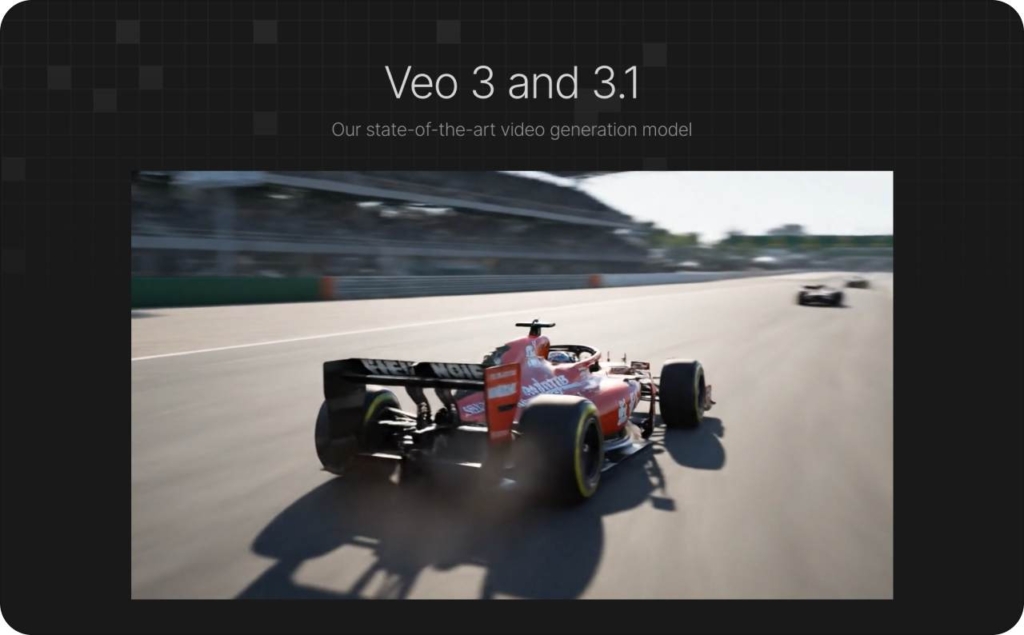
Photo source: Google AI studio
AI-powered UGC-style video ads — relatable storytelling that converts
User-generated content (UGC) is powerful because it feels real, and AI makes it easy to create. AI tools can moderate submissions, pick the most engaging clips, or even generate UGC-style videos from scripts. Brands using this approach have seen up to a 29% boost in conversions and a growth in search traffic driven by authentic content.
Why it works
- It feels like a friend talking, not a polished ad
- It scales storytelling using AI to sort and create variations fast
- It cuts production costs dramatically
- Audiences trust and engage with them more
How to use it
Collect raw footage or simple user clips, then let AI tools pick and polish the best ones. Run short video ads with 4–8 variations and track performance. Expect 10–30% lower acquisition costs or 15–40% higher return on spend.
Hidden pitfall
AI doesn’t understand tone; some UGC-style clips may feel over-produced or inauthentic — always check for authenticity first.
Conversational ads inside community discussions — ads where people talk
On Reddit, you can place ads directly within comment threads or surface positive user remarks under your creative. Reddit’s new “Conversation summary add-ons” feature does exactly that — making your ad feel part of a real discussion. It drew praise because it mirrors how people talk naturally, increasing engagement.
Why it works
- It embeds your message into real community dialogue
- It boosts trust by showing genuine comments under your ad
- It targets niche groups with high purchase intent
- It leverages Reddit’s community authenticity to fuel ad effectiveness
How to use it
Launch a Reddit campaign and enable Conversation Summary Add-ons to surface supportive comments just below the ad. Monitor engagement, especially click-through and time-in-thread. Expect Tuesday-level boosts in comment engagement and a lift in conversion intent.
Hidden pitfall
If the community sentiment is mixed, showing comments could backfire. Make sure the comments you surface align positively with your message.
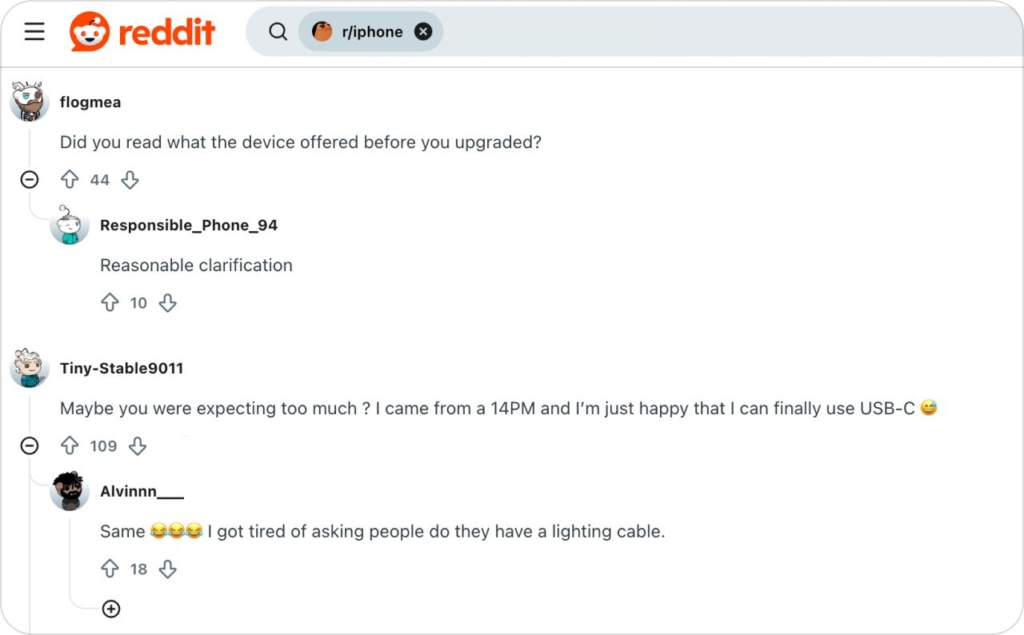
Photo source: Reddit
Detecting creative fatigue and refreshing on time — keep performance from sliding
Every ad has a shelf life. As impressions stack up, people stop noticing your ad, and click-through rates start falling because of ad fatigue. You should know how to identify and prevent ad fatigue. For example, Google Ads recommends refreshing creatives once performance drops and using its asset-level reports to score which headlines and visuals are wearing out.
Why it works
- It prevents wasted spend on ads that people ignore
- It keeps campaigns stable by rotating in new versions early
- It helps AI bidding systems by feeding them fresh, relevant data
- It makes your ads feel timely and not repetitive
How to use it
Check asset reports weekly. When CTR or conversion rate drops below your campaign average, replace or refresh that asset. Aim to launch 3–6 new creatives every 7–14 days. This cycle can add 10–25% more conversions compared to letting ads go stale.
Hidden pitfall
Refreshing too often resets the learning phase, so time your updates carefully—don’t swap everything at once.
Marketing mix modeling with geo-tests — prove which channels really work
When cookie tracking misses conversions, you need experiments that measure real lift. Marketing mix modeling uses historical sales and spend data, while geo-tests split regions into “exposed” and “holdout” groups. Harvard Business Review calls this the “gold standard” for measuring incrementality.
Why it works
- It reveals which channels truly drive sales instead of relying on platform claims
- It guides budget allocation with evidence
- It protects you from over-spending on “modeled” conversions
- It builds confidence with investors or stakeholders
How to use it
Run a 4–6 week geo-test where half your regions pause a channel and half keep spending. Feed the results into a simple MMM tool or partner. Expect to see 10–30% variance between modeled and actual incremental sales.
Hidden pitfall
Geo-tests require enough regional volume, too little data and results can look random.
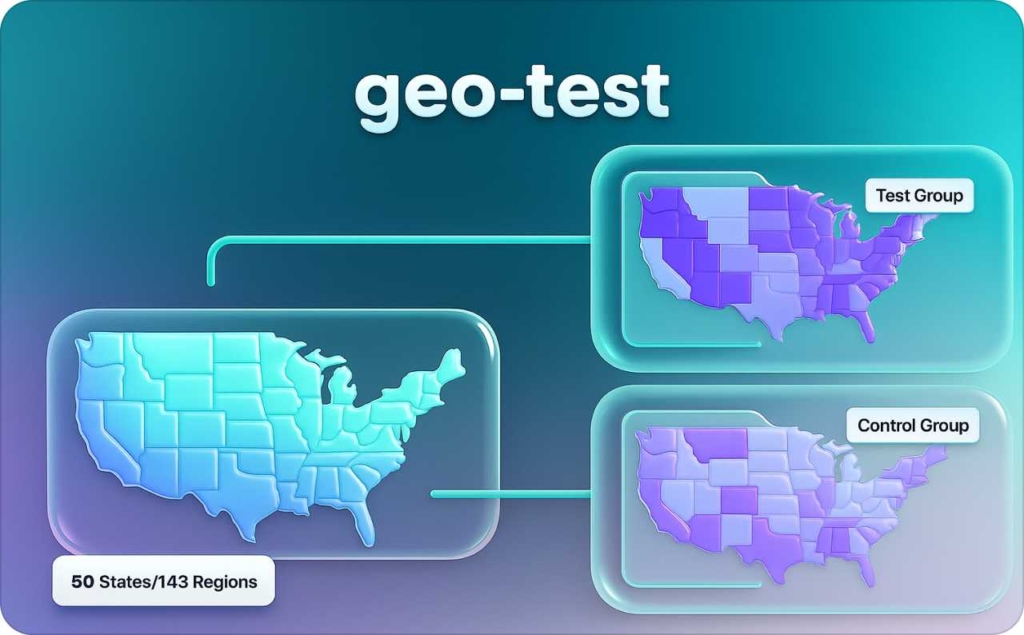
Smarter connected TV and digital billboards — real-time optimization
Streaming TV and digital billboards can be bought programmatically, just like online ads. But they’re also vulnerable to fake traffic. In 2025, Pixalate reported that 18% of connected TV impressions were invalid. Advertisers who applied real-time filters saw improved reach and cleaner metrics.
Why it works
- It lets you reach premium audiences in living rooms and public spaces
- It reacts in real time to audience data, like weather or sports events
- It reduces wasted spend on fake devices or spoofed screens
- It links upper-funnel awareness to actual business outcomes
How to use it
Set up campaigns through a demand-side platform with fraud filters enabled. Layer in real-time signals like location or event triggers. Rotate creative every 1–2 weeks to avoid fatigue. Look for brand-lift or sales impact of 20–30% compared to static buys.
Hidden pitfall
CTV is expensive; without fraud detection, you can lose nearly one-fifth of spend to invalid traffic.
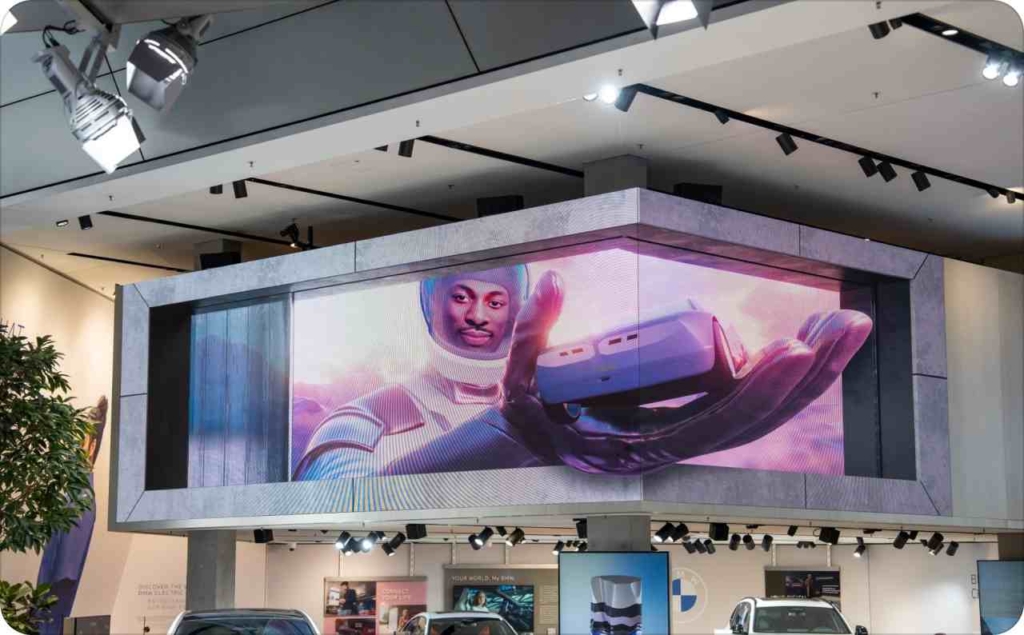
Photo source: BMW AI-driven digital billboard
Feed-driven automation in Google Performance Max — scale ads with your product catalog
Performance Max campaigns can automatically build ads from your product feed. When you connect your catalog, the system generates search, display, and video ads matched to real-time intent. Google rolled out new reporting and creative controls in 2025 to help advertisers see which asset groups and channels drive results.
Why it works
- It pulls product details straight from your feed, reducing setup time
- It adapts messaging automatically to search queries and placements
- It extends reach across YouTube, Search, Discover, and Display from one setup
- It maintains efficiency by learning from conversion values
How to use it
Upload a clean feed with titles, prices, and images. Group products into categories, set conversion values, and run campaigns for at least 2 weeks. Expect 25–40% higher return on ad spend compared to siloed campaigns.
Hidden pitfall
If your feed is messy or outdated, automation spreads bad data everywhere. Always keep titles, prices, and stock status accurate.
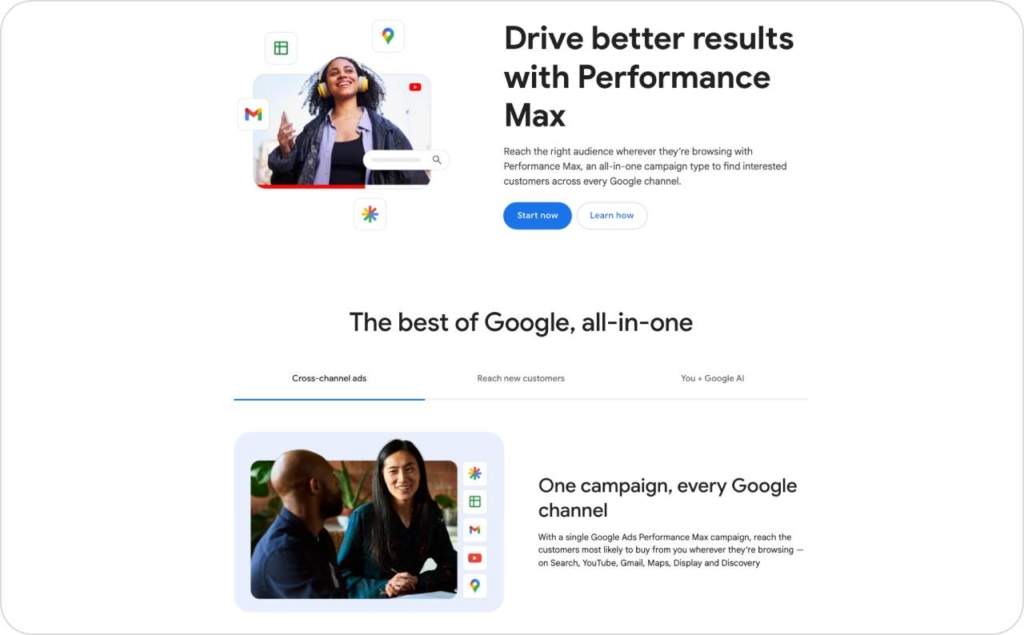
Photo source: Google Performance Max
YouTube Video Reach with auto-generated variants — expand awareness at scale
YouTube’s Video Reach campaigns can now automatically generate ad variations to test length and placement. This helps brands maximize impressions and reach unique viewers. Google highlighted how advertisers cut cost-per-thousand impressions by up to 30% with this format.
Why it works
- It scales awareness quickly across in-stream and in-feed placements
- It auto-creates shorter or skippable versions for better engagement
- It lowers CPM compared to manual setup
- It drives reach without requiring full video production teams
How to use it
Upload one base video, then let the system auto-create shorter variants. Run for at least 7 days, monitor CPM and unique reach, and compare brand-lift results. Expect 10–25% more efficient reach at the same budget.
Hidden pitfall
Auto-variants may cut too aggressively, review generated versions to ensure key brand messages stay intact.
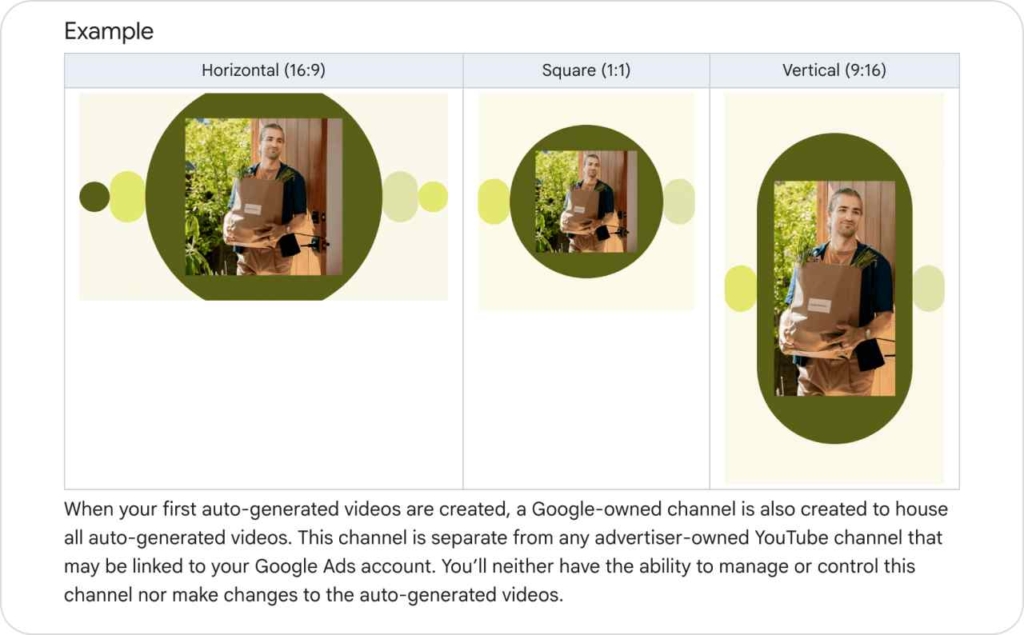
Photo source: Google Ads Help
Reasons to use an AI ad generator for your ads creation
Zeely is an AI-powered ad automation tool that works as both an AI generator for ads and a business growth app. It helps SMBs, marketers, and e-commerce owners create high-converting campaigns without expensive agencies or wasted trial-and-error. With Zeely, you get access to AI ad copy generation, AI video ads creator, and creative optimization all in one simple platform.
Pain points solved by Zeely
- No time to build ads → Zeely reduces ad creation from hours to minutes using AI automation
- Low budgets → Create low-cost ads that still perform, lowering customer acquisition cost and improving return on ad spend
- No design or copywriting skills → Zeely generates polished visuals and persuasive AI ad copy that match your brand voice
- Campaign complexity → Simplify digital advertising with one app that manages creative production, targeting, and optimization
- Low conversion rates → Improve performance with built-in conversion rate optimization powered by machine learning
- Scaling problems → Launch new campaigns or product ads instantly, and scale them with lookalike modeling and performance max strategies
- Wasted ad spend → Zeely uses real-time data to stop underperforming ads before they drain your budget, cutting spend inefficiencies
Why choose Zeely
Zeely is more than an AI ad tool, it’s your shortcut to cost-efficient, conversion-focused advertising. It gives you the power of AI ad copy generation, video automation, and predictive optimization without needing advanced skills.
By removing barriers like high costs, complex campaign setup, or design limits, Zeely helps you focus on scaling your business with ads that deliver real growth.
Also recommended
